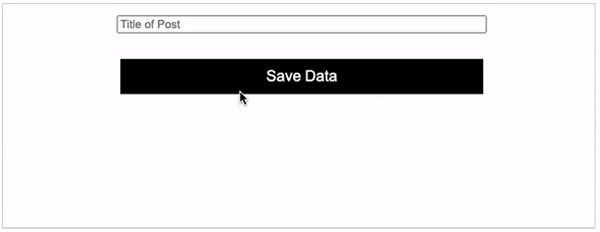
 Data Structure
Data Structure Networking
Networking RDBMS
RDBMS Operating System
Operating System Java
Java MS Excel
MS Excel iOS
iOS HTML
HTML CSS
CSS Android
Android Python
Python C Programming
C Programming C++
C++ C#
C# MongoDB
MongoDB MySQL
MySQL Javascript
Javascript PHP
PHP
- Selected Reading
- UPSC IAS Exams Notes
- Developer's Best Practices
- Questions and Answers
- Effective Resume Writing
- HR Interview Questions
- Computer Glossary
- Who is Who
HTTP Requests with axios in ReactJS
In this article, we are going to learn how to send and receive Http Responses with axios in a React application.
Why Use axios?
Automatic conversion of response to JSON format
Easy to use and more secure
Setting up global HTTP interceptors
Simultaneous Request
Installing the module
npm install axios
OR
yarn add axios
Npm is the node package manager which manages our React package but yarn is the more secure, faster and lightweight package manager.
Sending GET request
https://jsonplaceholder.typicode.com/todos/1
Jsonplaceholder is a fake API which is used to learn the process of the sending requests.
Example
App.jsx
import React, { useEffect, useState } from 'react';
const App = () => {
const [data, setData] = useState(null);
const [fetchData, setFetch] = useState(false);
useEffect(() => {
if (fetchData) {
axios.get('https://jsonplaceholder.typicode.com/todos/1')
.then((res) => setData(res.data.title));
}
}, [fetchData]);
return (
<>
<h1>{data}</h1>
<button onClick={() => setFetch(true)}>Fetch Data</button>
</>
);
};
export default App;
In the above example, we are sending the GET request to the jsonplaceholder and accessing the data which is going to be inserted in the state as soon as the response is received.
Response sent by axios

Output
This will produce the following result.

Sending POST request
https://jsonplaceholder.typicode.com/todos/1
Jsonplaceholder is a fake API which is used to learn the process of the sending requests.
Example
App.jsx
import React, { useEffect, useState } from 'react';
import './App.css';
const App = () => {
const [data, setData] = useState(null);
const [val, setVal] = useState('');
const [fetchData, setFetch] = useState(false);
useEffect(() => {
if (fetchData) {
const payload = {
method: 'POST',
body: JSON.stringify({ title: val }),
};
axios.post('https://jsonplaceholder.typicode.com/posts', payload)
.then((res) => setData(res.data.id));
}
}, [fetchData]);
return (
<>
{data && <h1>Your data is saved with Id: {data}</h1>}
<input
placeholder="Title of Post"
value={val}
onChange={(e) => setVal(e.target.value)}
/>
<button onClick={() => setFetch(true)}>Save Data</button>
</>
);
};
export default App;
In the above example, we are sending the POST request to the jsonplaceholder with the input field value in the body and displaying the response accordingly.
Response sent by axios

Output
This will produce the following result.


